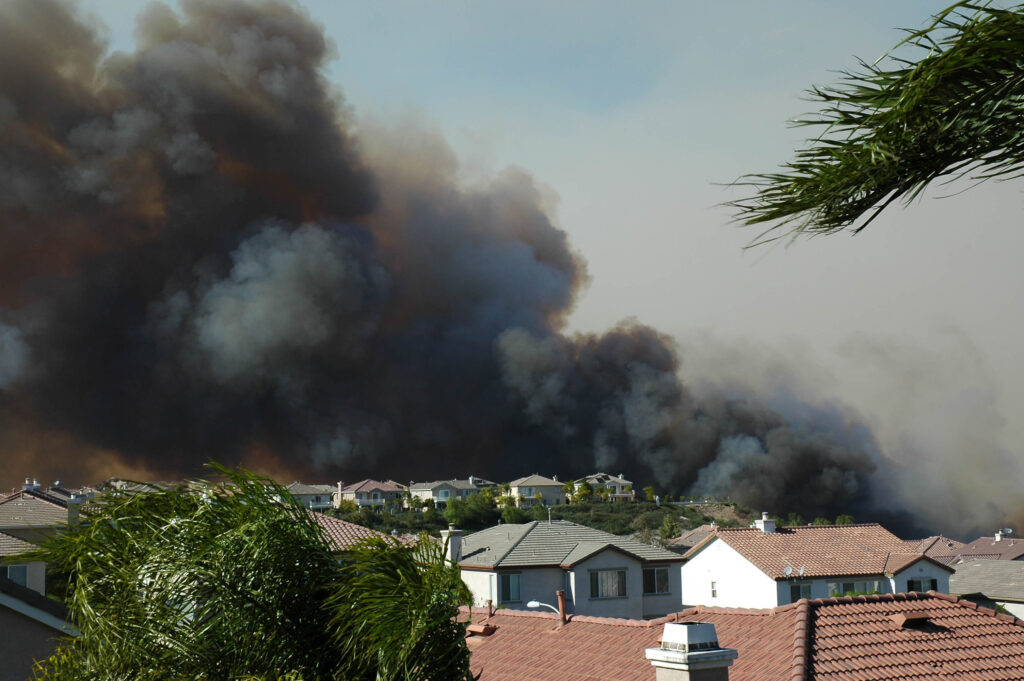
Wildfire season is here, and taking steps now can prepare you and your family to react to a wildfire that could threaten your home or community.
DEVELOP A PLAN: Make a plan with your loved ones on what to do during an emergency. Write it down and do a practice run-through.
- Agree on a meeting place.
- Update emergency contacts.
- Identity local and out-of-area contacts.
- Consider the needs of young children and elderly.
- Plan for your animals and livestock.
PROTECT YOUR HOME: Give your home a better chance of surviving a wildfire by slowing its spread. The Clackamas Fire District: recommends the following:
Within 0-30 feet around your home or to the property line:
- Remove all dead plants and leaves.
- Trim trees-keep branches a minimum of ten feet from other trees.
- Remove vegetation and other Items that can catch fire around decks.
Within 30-100 feet around your home or to the property line:
- Cut or mow grass to a maximum of four inches.
- Create horizontal spacing between shrubs and trees.
- Create Vertical Spacing between grass, shrubs, and trees.
KNOW THE EVACUATION LEVELS:
Level 3 Evacuation: If you receive the level 3 order, leave your home as soon as possible.
- When it is safe, let your insurance company know that you have been ordered to evacuate. Confirm your policy coverage, deductible, and specific coverage limits.
- Save all receipts. Many insurance companies will help cover expenses such as lodging, food, and pet boarding.
- Work on a home inventory list.
- Look through photos and videos to help recall personal items. There are several Apps that can be downloaded for inventory assistance.
- To the best of your ability, write down the age, original cost, and replacement cost of each item.
Level One and Two Evacuations:
- Contact Your Insurance Company to check your policy.
- Ask about auto coverage. You need comprehensive coverage on your vehicle to cover damage caused by a wildfire.
- Make a quick home inventory.
- Take photos of each room in your home. Do not forget storage areas, such as the attic, shed, and garage.
- Build a financial backpack.
- Gather important financial documents, such as passports, Social Security cards, insurance policies, titles, deeds, and financial accounts.
- Make copies or scan them to your phone or computer.
- Place all of the information with your go-bag of emergency supplies so this information is with you when you need to evacuate.
Outside of evacuation zone: Time to prepare is now.
Follow the disaster preparedness tips provided by the division at dfr.oregon.gov/preparenow.
In general, homeowners insurance typically covers damage caused by wildfires. However, it’s important to note that insurance policies can vary, so it’s essential to review your specific policy to understand the extent of coverage for wildfire damage.
Standard homeowners insurance policies typically include coverage for the structure of your home and other structures on your property, such as garages or sheds. These policies provide coverage for fire-related damage, including damage caused by wildfires and includes the cost of repairing or rebuilding your home and other structures if they are damaged or destroyed by a wildfire.
Additionally, homeowners insurance policies usually include coverage for personal belongings, such as furniture, appliances, and clothing. If your personal property is damaged or destroyed in a wildfire, your insurance policy may cover the cost of replacing these items up to the limits specified in your policy.It’s important to keep in mind that some insurance policies may have specific exclusions or limitations for wildfire-related damage. For example, your insurance policy may have additional provisions or requirements if you live in an area prone to wildfires or high-risk zones.
It’s advisable to consult with your insurance agent and review your policy documents to understand the specifics of your coverage for wildfire damage
